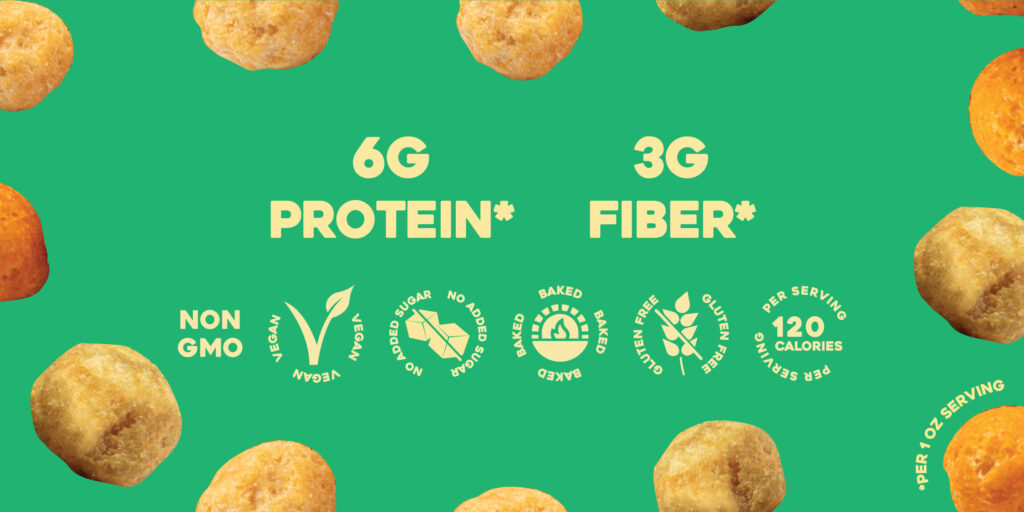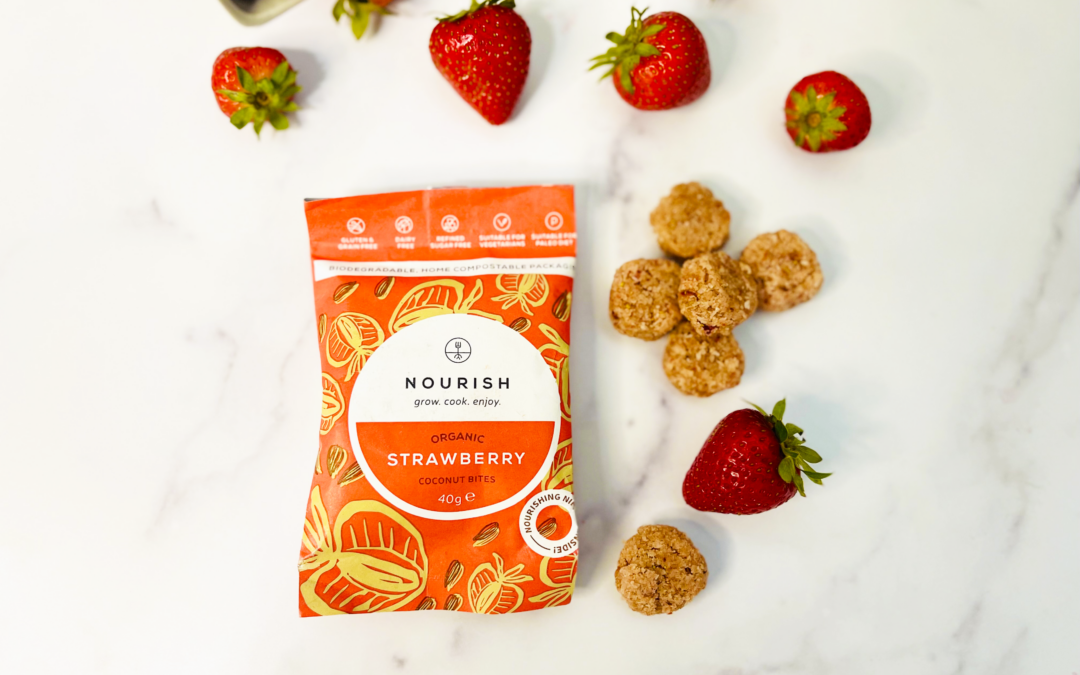Protected: FIT SNACK FIT GUIDE 04 2024
Password Protected
To view this protected post, enter the password below:
To view this protected post, enter the password below:

At Fit Snack, we’re always excited to introduce you to brands that are making a difference in the world of snacking. Today, we’re thrilled to bring you the story of GoodSAM, a brand that is redefining peanuts with a touch of indulgence and a whole lot of purpose. These aren’t your regular peanuts; they’re peanuts with a mission. GoodSAM’s chocolate-coated peanuts not only offer a delightful blend of sweet and savory but also stand as a symbol of regenerative agriculture, sustainability, and the well-being of local communities.
A Better Kind of Peanut: GoodSAM’s peanuts are like regular peanuts, only better. What makes them truly special is the absence of harmful chemicals that nuts are typically treated with. Instead, they’re adorned with a delicious chocolate candy coating, creating the perfect harmony of sweet and savory in every bite.
Cacao from Colombia’s Biodiverse Regions: The journey of GoodSAM’s peanuts begins with their organic cacao, sourced from two of Colombia’s biodiverse regions – The Sierra Nevada de Santa Marta and the Perijá Serrany. This cacao is cultivated by 150 local families who have embraced regenerative agriculture, a method that harmonizes with the delicate ecosystems of these regions.
A Mission of Good: GoodSAM is on a mission to make access to delicious, healthy, and regenerative food products easier for everyone. But their mission goes beyond just providing tasty snacks. It’s about doing good along the way. They are committed to crafting products that prioritize the use of organic and non-GMO ingredients.
Direct Trade: GoodSAM has embraced a Direct Trade model, eliminating all middlemen in their supply chain. This ensures that the benefits reach the source. By investing in farmers and their businesses, they create a sustainable cycle of support and growth.
Reinvestment in Communities: In addition to paying organic and fair trade premiums, GoodSAM takes it a step further. They allocate 1% of all top-line sales to reinvest in the farmers and their communities. This commitment fosters economic stability and empowers local families, leaving a positive impact that resonates far beyond snack time.
Regenerative Agriculture and Sustainability: GoodSAM’s supply chain revolves around regenerative agriculture, which involves smallholder farmers and indigenous communities. This approach not only nurtures the environment but also supports the livelihoods of those involved in the production process.
Versatile and Delicious: You can enjoy GoodSAM’s chocolate-coated peanuts as a regular snack or get creative by adding them to your favorite cookie or brownie recipe. These dark chocolate candy-coated peanuts are a delight with no added sugar, making them a versatile and health-conscious choice for your snacking adventures.
Snack with a Purpose: When you savor GoodSAM’s chocolate-coated peanuts, you’re not just enjoying a delectable snack; you’re becoming a part of a movement that values sustainability, fair trade, and community well-being. Every bite is a reminder that snacks can be more than just satisfying; they can also be a force for good.
Indulge in GoodSAM’s chocolate coated peanuts visit GoodSamFoods.com and use code fitsnack20 at checkout.

At Fit Snack, we’re all about discovering snack brands that elevate your snacking game while keeping health in mind. Today, we’re thrilled to introduce you to Yummate – the creators of crunchy chickpea puffs with a plant-based twist and bold flavors that you’re bound to fall in love with. Wherever there’s fun, there are snacks, and Yummate is here to celebrate the joy of snacking without the weight of guilt. Let’s dive into the world of Yummate and their mission to revolutionize the snacking experience.
Protein-Packed Goodness: Yummate’s chickpea puffs are more than just a tasty treat; they’re a source of protein-packed goodness. Each bag contains a whopping 6g of protein and 3g of fiber. These wholesome ingredients are carefully chosen to keep you feeling nourished and satisfied. From that very first bite, you’ll know that these protein-packed chips are something special.
Guilt-Free Snacking: Snacking should be a guilt-free pleasure, and Yummate makes sure of that. Their chickpea puffs are vegan, gluten-free, plant-based, and non-GMO. They’re baked to perfection, meaning you can enjoy the deliciousness of these vegan protein snacks for both adults and kids without any compromise on taste. With each bag at just 120 calories, you can snack away without hesitation.
Snack with a Smile: Yummate’s vegan chips are designed to put a smile on your face with every bite. They’re perfectly crispy, airy, and oh-so-crunchy. Each munch is pure snacking bliss. The bold flavors and satisfying crunch make it impossible to resist reaching for another handful. Yummate knows that snacks should be fun, and they’ve nailed it with their irresistible chickpea puffs.
A Mission to Revolutionize: Yummate isn’t just about creating snacks; they’re on a mission to change the way we snack. They’re taking snacking to a whole new level of enjoyment, where you don’t have to compromise on flavor or health. It’s about embracing the fun of snacking without the burden of guilt. With Yummate by your side, snacking becomes an experience to look forward to.

Join the Yummate Revolution: If you’re looking for a snack that combines bold flavors, plant-based goodness, and a guilt-free indulgence, Yummate’s chickpea puffs are the answer. With 6g of protein, 3g of fiber, and a promise of pure snacking delight in every bite, Yummate is redefining what it means to enjoy snacks.
Experience the revolution in snacking with Yummate and let your taste buds savor the future of fun and flavor.
Discover Yummate’s delicious chickpea puffs now. Visit Amazon and use promo code 15FitSnack to save 15% on your purchase. Exp.11/30/23.

In early 2022, two like-minded companies, R.E.D.D. and LesserEvil, embarked on a journey to redefine the world of snacking. United by a shared commitment to sourcing high-quality, clean ingredients, avoiding excessive processing, and championing sustainability, these companies set out to create a new generation of delicious and functional foods that would elevate the snacking experience for all. Today, we delve into the world of R.E.D.D. Bar, where clean energy meets extraordinary taste.
A Timeless Duo
Let’s start with the classics, because who can resist the timeless combination of peanut butter and chocolate? R.E.D.D. Bar offers a delectable Peanut Butter flavor that will satisfy your cravings while providing you with a whopping 9 grams of protein. That’s right, you get the best of both worlds: indulgence and nutrition. But that’s not all; this flavor also contains only 2-5 grams of sugar and an impressive 10-15 grams of fiber, making it a snack that fuels you for the long haul.
For those who crave that irresistible balance of sweet and salty, R.E.D.D. Bar presents the Salted Caramel flavor. It’s the chewy, gooey goodness you’ve been dreaming of, wrapped in a convenient on-the-go treat. With R.E.D.D. Bar, you’re getting real food, balanced macros, and clean energy, all in one irresistible package.
A Collaboration of Clean Ingredients
What makes R.E.D.D. Bar truly exceptional is its commitment to clean, high-quality ingredients. Both R.E.D.D. and LesserEvil believe in the power of nature, and their partnership is a testament to that belief. These bars are free from heavy and excessive processing, ensuring that you’re enjoying the pure goodness of the ingredients. Plus, they incorporate sustainable approaches, because caring for the planet is an integral part of their mission.
R.E.D.D. Bar isn’t just about satisfying hunger; it’s about fueling your body with the nutrition it deserves. Whether you choose the classic Peanut Butter flavor or opt for the perfect balance of Salted Caramel, you can trust that you’re making a choice that supports your health and well-being.
In the world of clean, functional snacking, R.E.D.D. Bar stands out as a delicious collaboration between R.E.D.D. and LesserEvil. These bars are a celebration of clean ingredients, balanced macros, and clean energy. Whether you’re a fan of the classic peanut butter and chocolate combo or prefer the sweet and salty allure of salted caramel, R.E.D.D. Bar has something to offer. It’s time to elevate your snacking game with a bar that not only tastes amazing but also fuels your body with the goodness it craves. Join the clean energy revolution with R.E.D.D. Bar, where good taste meets great nutrition.
To purchase, visit ReddBar.com and use coupon code fitsnack20 to save 20% at check out.

In the world of snacking, finding the perfect balance between deliciousness and nourishment can be a real challenge. That’s where Nourish steps in. These handmade bites and snacks are crafted with one goal in mind: to keep your body functioning at its peak. Join us as we explore the world of Nourish, where organic ingredients and delightful flavors combine to create a snacking experience like no other.
The Power of Organic Ingredients
Nourish takes snacking to a whole new level by using only the freshest of organic ingredients. Why organic, you ask? Because they believe that when it comes to fueling your body, nothing but the best will do. These ingredients are carefully selected to provide you with the highest quality and most nourishing snacking options.
The Taste of Summer, All Year Round
One of Nourish’s standout creations is the sweet strawberry bites. These delectable treats capture the essence of summer with every bite. Imagine the vibrant flavor of sweet strawberry pieces blended with the richness of raw honey and just a hint of white cacao. It’s like a taste of sunshine and happiness in every bite, perfect for brightening up your day.
No Refined Sugar – Only Natural Sweetness: At Nourish, they understand the importance of making healthier choices when it comes to snacking. That’s why their creations are free from refined sugar. Instead, they rely on the natural sweetness of ingredients like raw honey to give you that satisfying sweetness without compromising your health.
Nourish is committed to making snacking inclusive for all. Their bites are gluten-free, ensuring that individuals with dietary sensitivities can also enjoy these delicious treats. Plus, Nourish bites are vegetarian, aligning with a range of dietary preferences and restrictions.
In a world where snacking often means sacrificing health for taste, Nourish stands out as a beacon of hope. These handmade bites and snacks are a testament to the power of organic, nourishing ingredients. Whether you’re savoring the taste of summer in their sweet strawberry bites or exploring their other delightful creations, you can snack with confidence, knowing that you’re fueling your body at its peak. With no refined sugar, gluten-free options, and a commitment to vegetarian goodness, Nourish is the choice that aligns with your health and taste preferences. So, why settle for ordinary snacking when you can elevate your experience with Nourish? Discover the joy of delicious, organic snacking today!
To purchase, visit Nourish-Growcookejoy.com